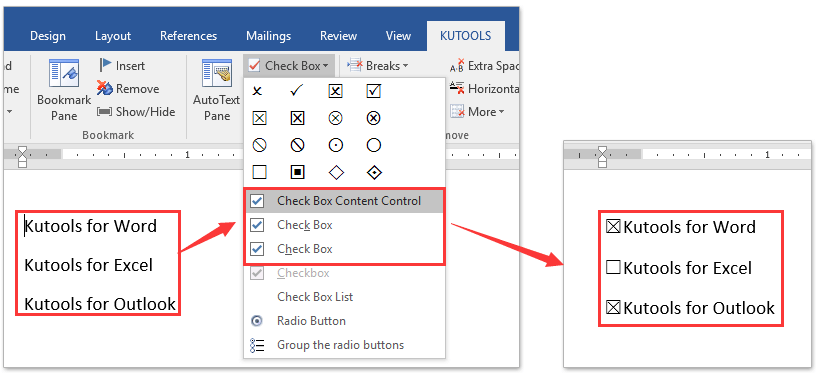
Word 2013 allows an individual content control to appear in one of three possible states: In Word 2013, content controls provide three key improvements: improved visualization, support for XML Mapping for Rich Text content controls, and a new content control for repeating content. Content control improvements in Word 2013 Word 2010 content controls enable various potential structured document solutions, but in Word 2013 content controls enable a greater range of scenarios. The following content controls are available in Word 2010: Content controls help you to create rich, structured blocks of content and are designed for use in templates that insert well-defined blocks into your documents, creating structured documents.Ĭontent controls are ideal for creating structured documents because content controls help you fix the position of content, specify the kind of content (for example, a date, a picture, or text), restrict or enable editing, and add semantic meaning to content. Individual content controls can contain content such as dates, lists, or paragraphs of formatted text. Using content controls to structure a documentĬontent controls are Microsoft Word entities that act as containers for specific content in a document. Here are some common scenarios for structured content in Microsoft Word:Ī legal firm needs to create documents that contain legal language that should not be changed by the user.Ī business needs to create a proposal cover page where only the title, author, and date are entered by the user.Ī business needs to create invoices where the customer data is included in the invoice at predefined regions. Structured documents are documents that control where content can appear on a document, what kind of content can appear in the document, and whether that content can be edited. This topic provides information about changes to content controls in Microsoft Word 2013 and the document scenarios that those changes enable.
WORD FOR MAC COMBO BOX CODE
If you encounter any errors, we will need to know on what line of code the error occurs and Please post the EXACT title, number, and text of the error message.Learn how Microsoft Word 2013 content controls enable a larger range of structured document scenarios. When you do, please let us know which version of office/access you are using. you should go ahead and repost your efforts to this thread. To give you an example of application automation read thru the following insight article: Application Automation now this does deal with Outlook and Excel however, word is essentially the same basic principles However, it really depends on your skill set as to the best method to use to get your information out to word.

but I'm a little bias here given the amount of help his site has given me over the years.įrom here, we're going to need to either store the query that you will create using the control's values- and then you can open the word document by hand (IMHO the easiest for newer VBA programmers or for those just occational type merges), store the query and then call word to open with the mail merge document that has already been linked to a query with that name, or pass the query via application automation. Browne most likely has the easiest to follow methods.

Use a multi-select list box to filter a report - Allen Browne One Method to get the selected information So in order to do anything with the control, you'll need to understand how a multiselect works and the common methods of retrieving the information out of the control: nor to the best of my knowledge can it be used that way directly. punnyĪs seen here: (don't bother to follow the links in this thread, they are all long dead thus, the code they reference is no longer available) you basically need to pass a record set to the word document and that's not what is happening with your document.

Ah, as so often happens the multi-select-listbox bytes again.


 0 kommentar(er)
0 kommentar(er)
